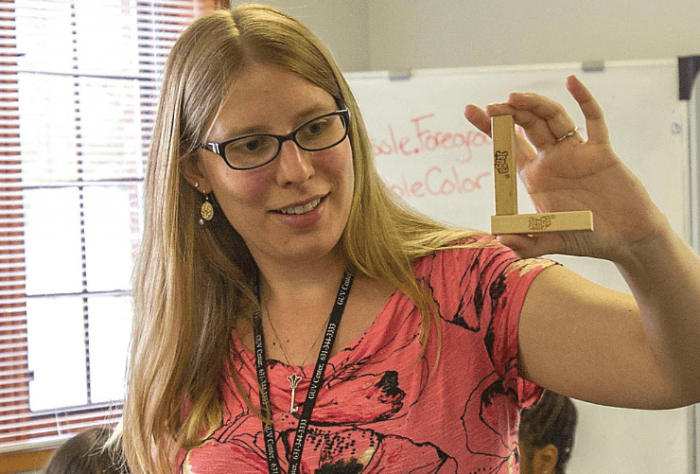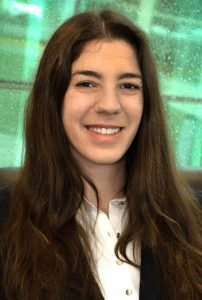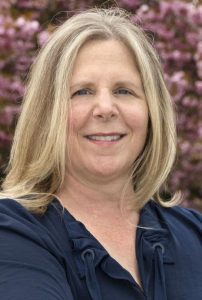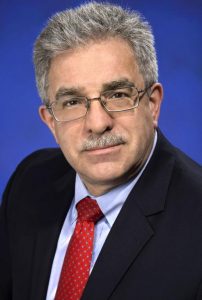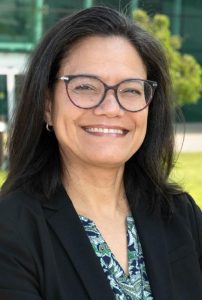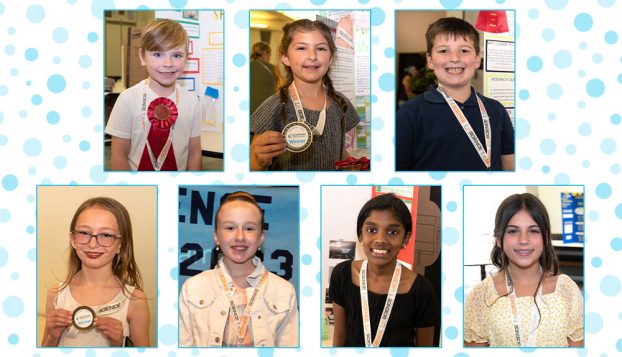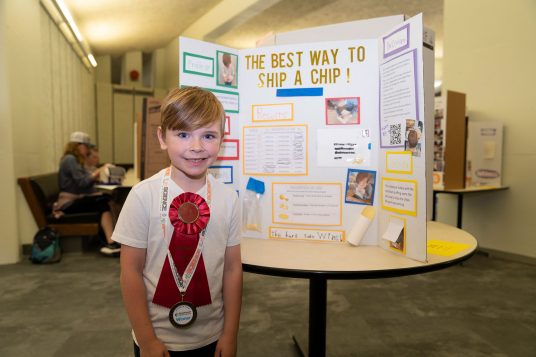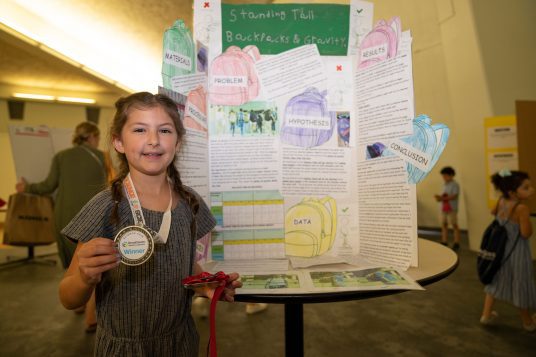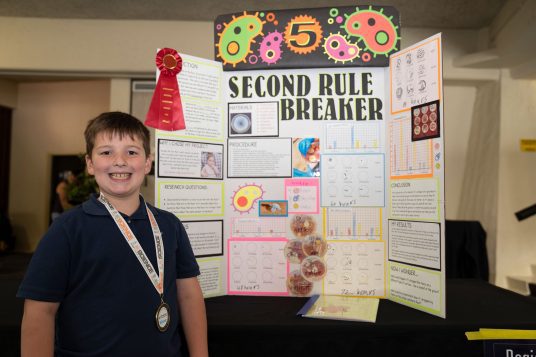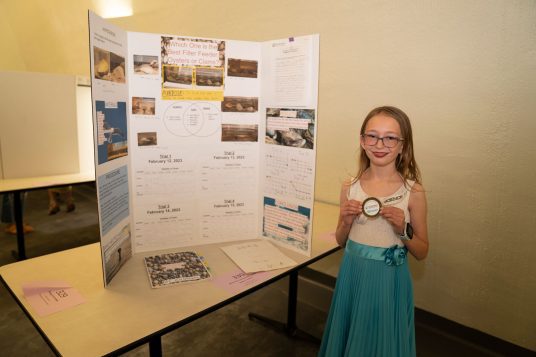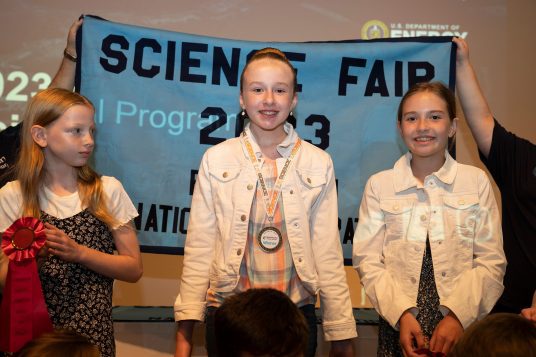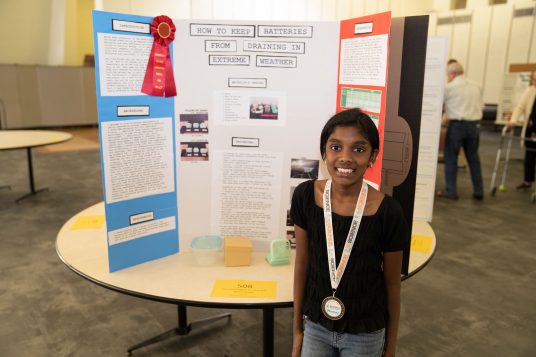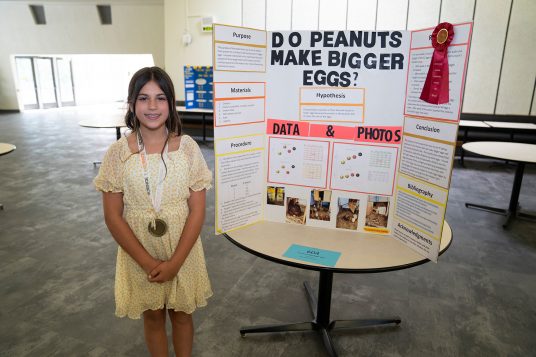Amanda Liang, a ninth grader from Paul J. Gelinas Junior High School in Setauket, won first place at the 45th annual Bridge Building Competition hosted by the U.S. Department of Energy’s (DOE) Brookhaven National Laboratory on April 3.
The competition shows students in grades nine through 12 what it’s like to be an engineer as they attempt to design a strong bridge out of only basswood and glue with a set of challenging specifications in mind. Their structures were put to the test under a crushing machine that slowly added more and more weight from above until the bridges broke or bent more than one inch.
The event is organized by Brookhaven Lab’s Office of Educational Programs (OEP) to advance its mission to cultivate the next generation of STEM professionals.
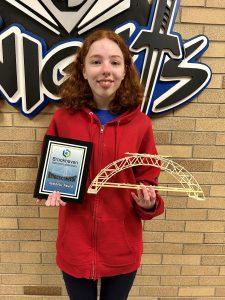
“I want you to imagine your future selves as professional engineers and you’re contributing something important to society,” Bernadette Uzzi, OEP’s manager for K-12 programs told students at the start of the competition. “Perhaps you’re designing a bridge, and you have to continually refine the structure to adapt to our ever-changing world, or maybe you’re here at Brookhaven involved in constructing our new Electron-Ion Collider, which is a ground-breaking machine that will unravel the mysteries of nature’s strongest force. Regardless of your future career plans, today you are engineering students and you’re part of Brookhaven’s journey.”
Uzzi also reflected on the recent bridge collapse in Baltimore: “I’m reminded why it’s so important to give students real-world, relevant experiential learning experiences like this event.”
This year, students from 14 schools around Long Island submitted 240 bridges — 193 of which met all qualifications for testing such as using a symmetrical design and weighing under 25 grams.
Bridges are ranked based on efficiency scores that are calculated from the load the bridge supports divided by the mass of the bridge — all in grams.
Liang’s design earned the top spot with an efficiency of 3,441.43.
“I looked at a bunch of old national bridges and I took a lot of inspiration from them,” Liang said, adding later, “I was really excited especially because it was my first year. I wasn’t sure how it was going to go. I didn’t expect this.”
Alexander Song and Daniel Liang, both juniors from Ward Melville High School in East Setauket, took second place and third place with efficiencies of 2,536.142 and 2,112.446, respectively.
The top two winners in Brookhaven’s regional competition qualified to compete in the International Bridge Contest on April 27 in New Philadelphia, Ohio.
Competition judges also issued an award for aesthetic bridge design to Julia Pincott, a senior at John Glenn High School in Elwood.
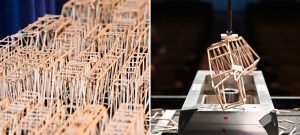
Throughout the bridge testing day, students had the chance to meet engineers from across the Lab, including longtime contest volunteers and Jordanna Kendrot, a safety engineer at the DOE-Brookhaven Site Office. Kendrot shared how in her own path to becoming a researcher, she found it was important to expand her studies beyond only engineering courses.
“It’s really about broadening your horizons and questioning the norms in engineering that will help us keep moving forward,” Kendrot said.
Amid all the bridge crushing, competition organizers tossed Brookhaven Lab and science trivia questions to students, who had a chance to win Lab merchandise for their correct answers.
Competitors tested their engineering skills in an additional STEM challenge to construct a miniature floating table. Students were also treated to a tour of the National Synchrotron Light Source II, a DOE Office of Science user facility that creates light beams 10 billion times brighter than the sun.
“This year’s bridge contest was a new experience for everyone,” STEM educator and event co-coordinator Theresa Grimaldi said. “It was the first time OEP organized this contest to be during school hours and it was such a pleasure to have the students here for the whole day, getting to know the engineers and touring the site.”
Brookhaven National Laboratory is supported by the Office of Science of the U.S. Department of Energy. The Office of Science is the single largest supporter of basic research in the physical sciences in the United States and is working to address some of the most pressing challenges of our time. For more information, visit science.energy.gov.


